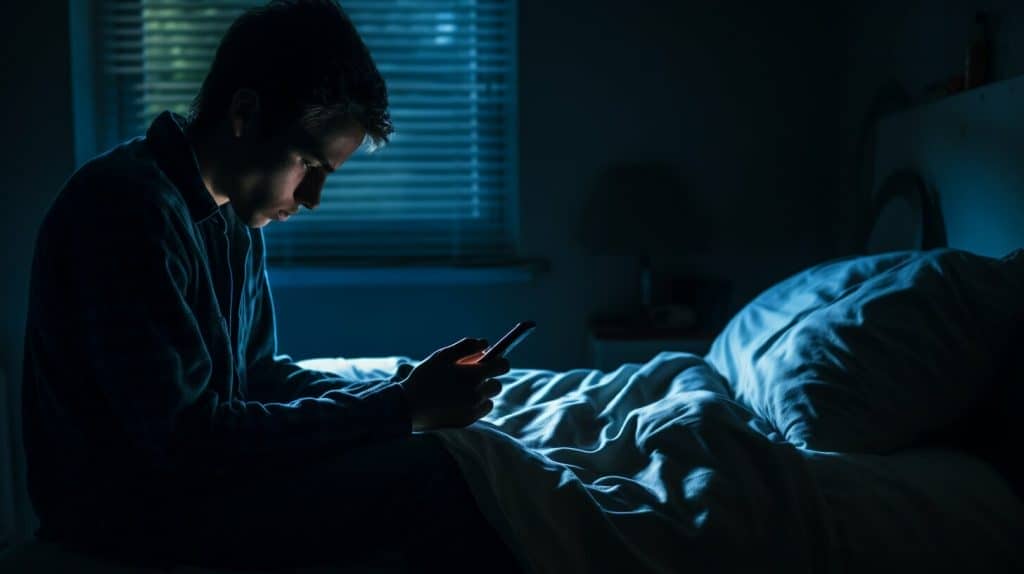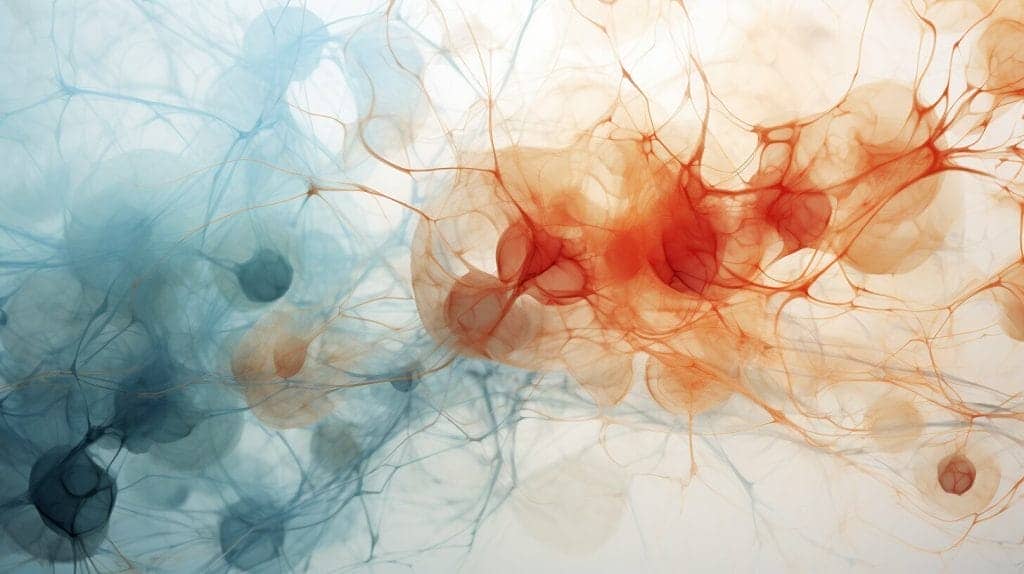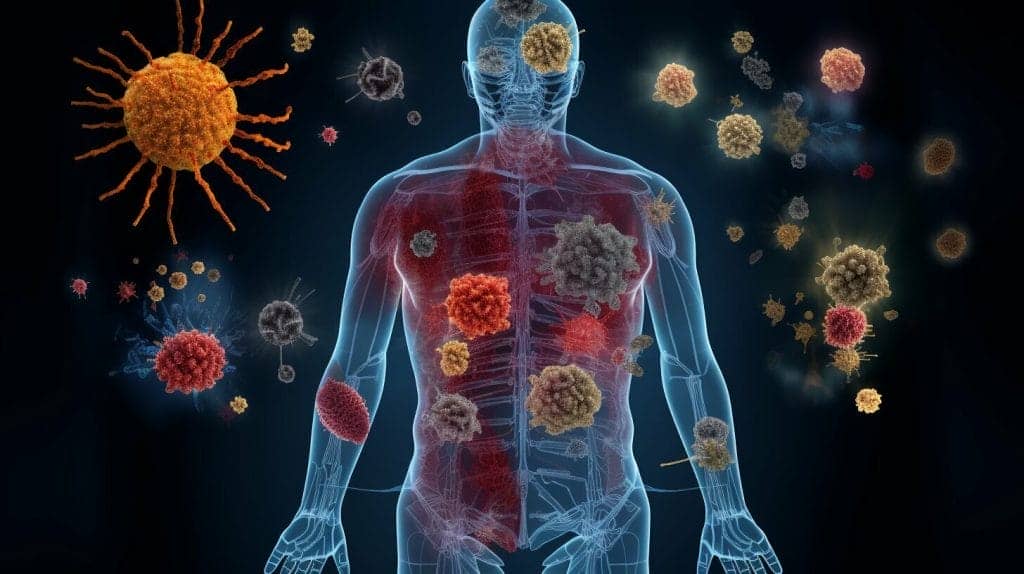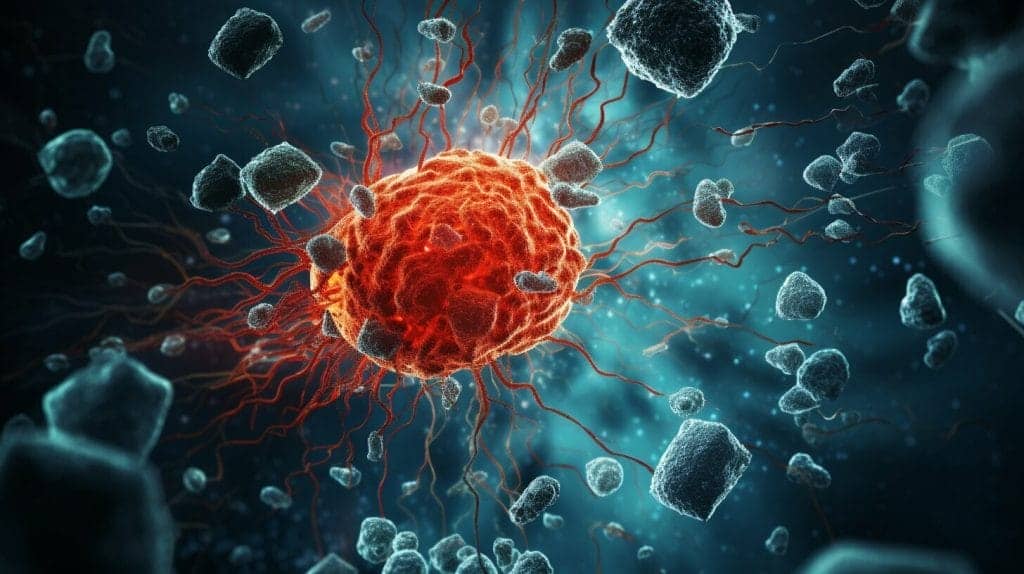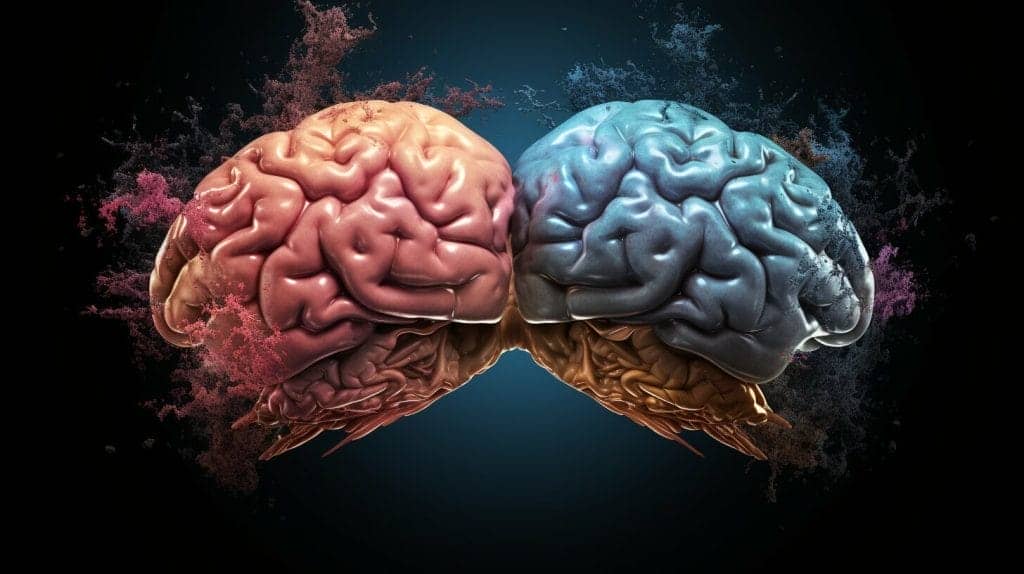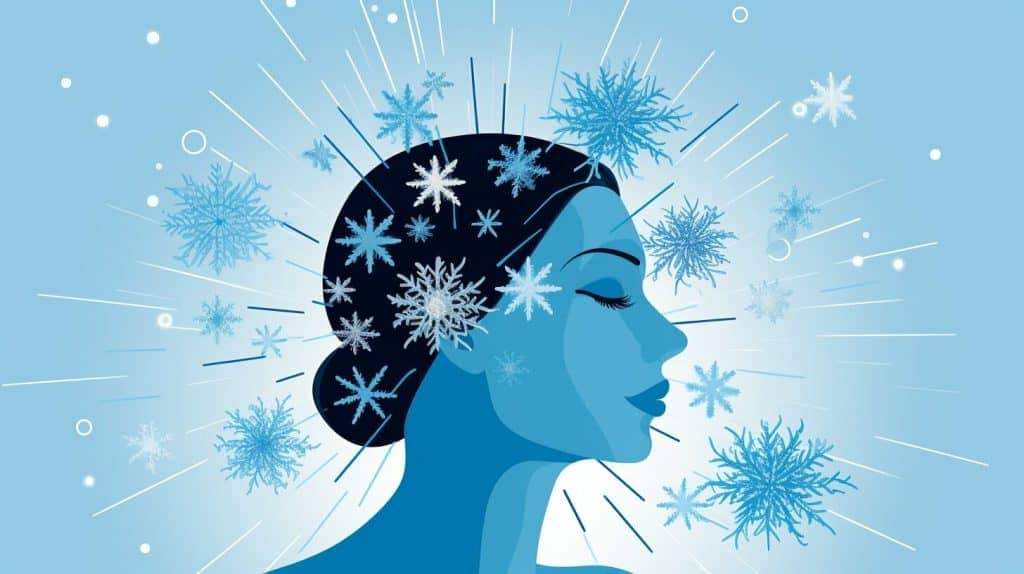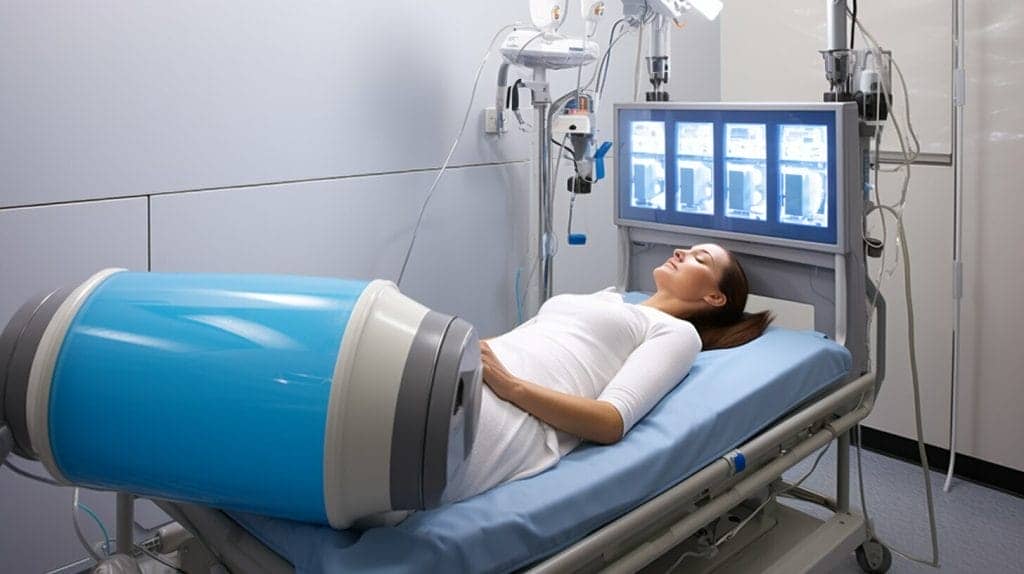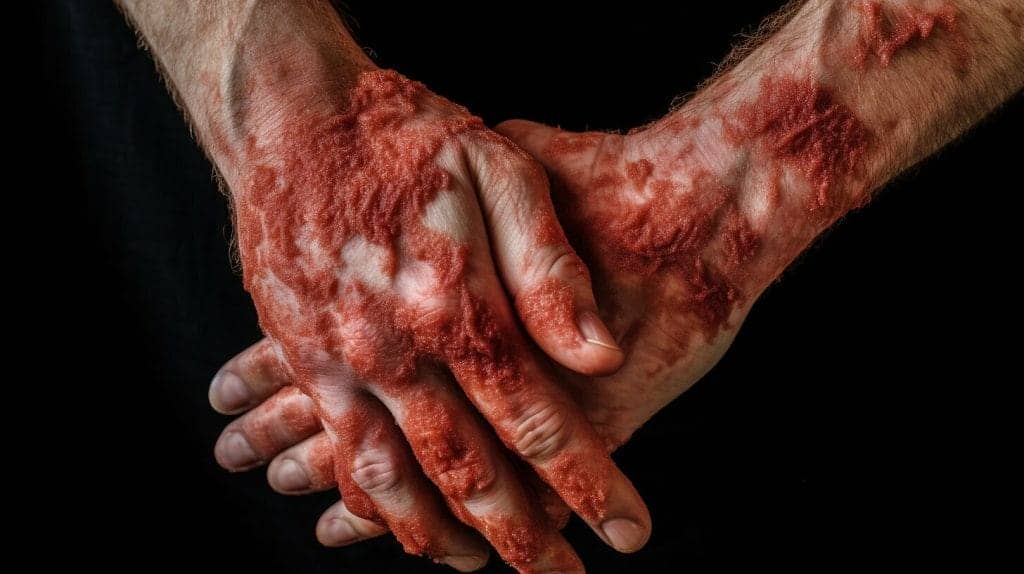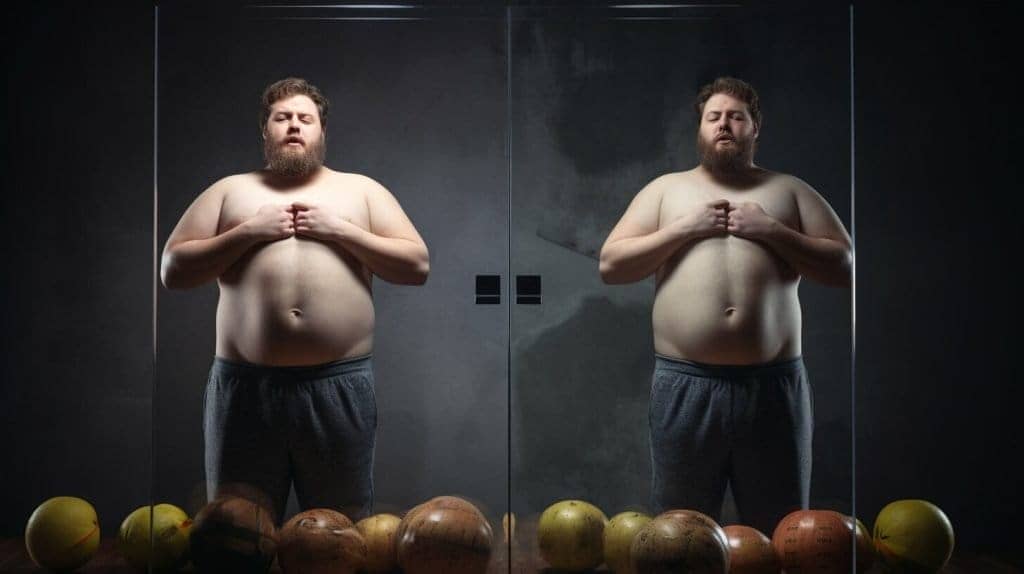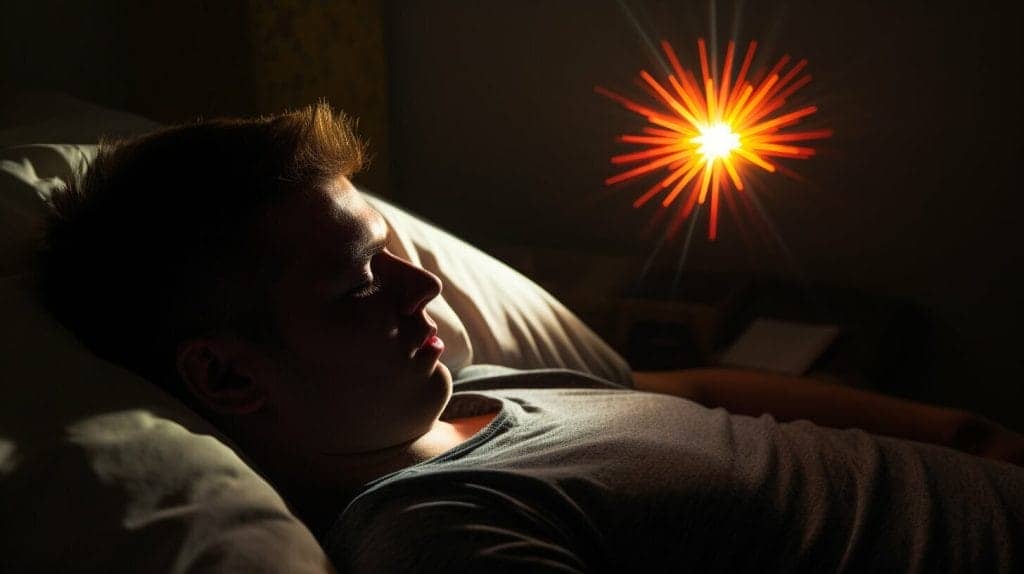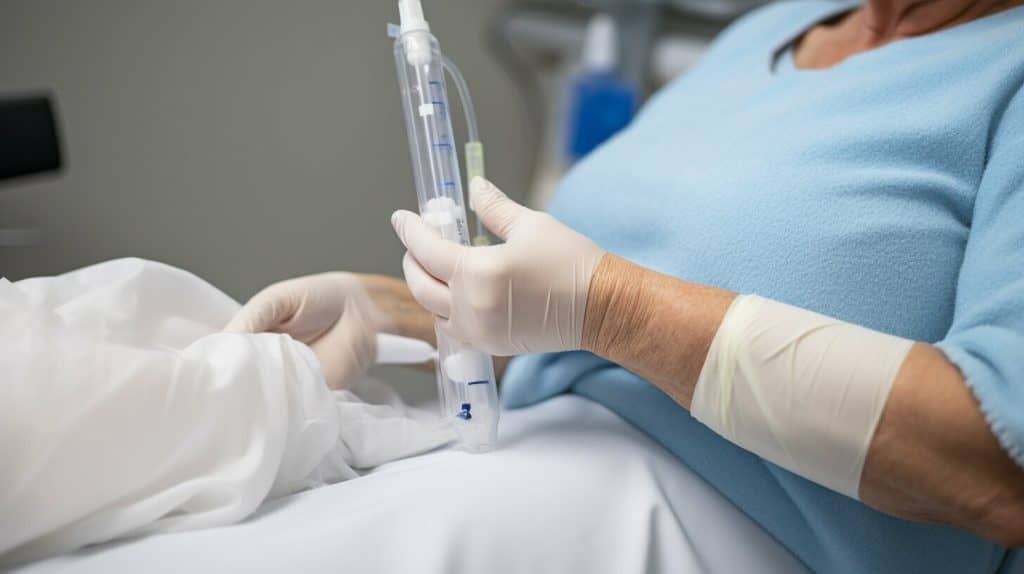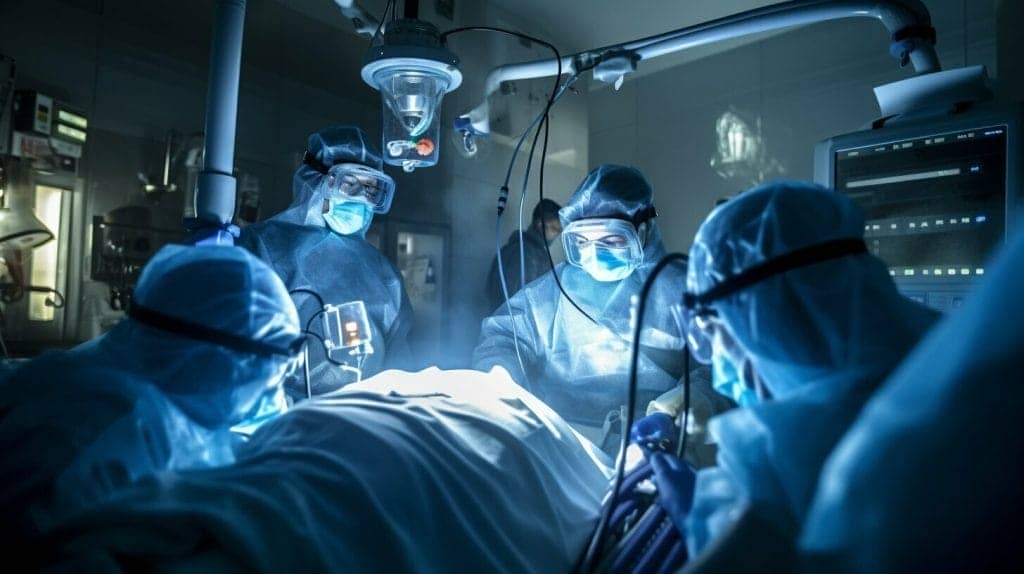As the world continues to grapple with the COVID-19 pandemic, healthcare professionals are discovering new symptoms associated with the virus. One such symptom is back pain. While back pain is a common ailment, COVID-related back pain differs in several ways, including the specific sensations and symptoms experienced by patients.
In this article, we will explore the symptoms, causes, and treatment options for COVID-related back pain. We will also highlight the work of Oasis Medical Institute in Tijuana, MX, a leading institution offering holistic treatments for COVID-19, including back pain relief.
Key Takeaways:
- COVID-related back pain differs from regular back pain in its specific sensations and symptoms.
- The virus can contribute to muscle and joint inflammation, leading to back pain.
- Treatment options for COVID-related back pain include conventional and holistic approaches.
- Lifestyle modifications can help alleviate back pain in COVID patients.
- It is important to seek medical attention if the pain worsens or is accompanied by other severe symptoms.
Understanding COVID Back Pain
COVID-19 is known to cause a range of symptoms, including fever, cough, and shortness of breath. However, many individuals also experience back pain as a result of the virus. This back pain can vary in severity and duration, with some patients experiencing mild discomfort, while others suffer from intense pain that lasts for several weeks.
COVID back pain differs from regular back pain in several ways. The pain may be more widespread and affect different areas of the back, including the upper and lower back, as well as the neck and shoulders. Additionally, COVID back pain may be accompanied by other symptoms, such as fatigue, muscle aches, and headaches.
The specific sensation associated with COVID-related back pain can also vary. Some individuals may feel a sharp, stabbing pain, while others experience a dull ache or throbbing sensation. The pain may be constant or sporadic, and it may worsen with movement or activity.
It is essential to recognize COVID-related back pain and seek medical attention if necessary. If you experience any symptoms consistent with COVID-19, including back pain, it is crucial to get tested and follow the appropriate guidelines to prevent the spread of the virus.
Symptoms of COVID Back Pain
COVID-19 can cause a variety of symptoms, including back pain. Individuals with COVID-related back pain may experience:
- Stiffness and soreness in the back muscles
- Sharp or dull pain in the lower back
- Pain that radiates down the legs
- Pain that worsens with movement
It is important to note that these symptoms can vary from person to person and may also overlap with regular back pain. However, individuals with COVID-19 may experience back pain as a primary or exclusive symptom of the virus.
Back pain is often caused by inflammation, and COVID-19 can cause inflammation throughout the body, including in the joints and muscles of the back. The virus also has the potential to damage nerves, resulting in pain or numbness in the back.
It is important to recognize and monitor back pain as a potential symptom of COVID-19, especially if it is accompanied by other symptoms such as fever, cough, or shortness of breath. Seek medical attention if symptoms worsen or persist.
Causes of COVID Back Pain
COVID-19 is a respiratory illness caused by the SARS-CoV-2 virus. However, the symptoms of COVID-19 are not limited to respiratory issues. COVID-19 can affect multiple organs and systems within the body, including the musculoskeletal system. The virus can contribute to muscle and joint inflammation, leading to back pain.
Back pain is a common symptom among COVID-19 patients. The pain can be concentrated in the lower back, upper back, or both. The causes of COVID-related back pain can vary depending on the individual case.
One of the potential causes of COVID back pain is viral inflammation. When the virus enters the body, it triggers an inflammatory response from the immune system. This inflammation can cause pain, swelling, and stiffness in the muscles and joints surrounding the spine.
Another possible cause of COVID-19 back pain is the prolonged period of inactivity and bed rest that many patients experience. This lack of movement can cause muscle weakness and tension, leading to pain and discomfort in the back.
Furthermore, some complications of COVID-19, such as pneumonia and acute respiratory distress syndrome (ARDS), can cause pain in the back and chest. The pressure and strain on the muscles and joints during breathing can result in back pain.
It is essential to recognize the symptoms of COVID-related back pain and seek medical attention promptly. Prompt diagnosis and treatment can alleviate symptoms and help prevent further complications.
Diagnosis of COVID Back Pain
Diagnosing COVID-related back pain requires a collaborative effort between the patient, healthcare provider, and diagnostic tools. Doctors typically evaluate patients for COVID-19 symptoms, conduct physical examinations, and perform imaging tests to diagnose the underlying cause of back pain.
If a patient has COVID-19 symptoms, healthcare providers may conduct a polymerase chain reaction (PCR) test to determine if they have the virus. Imaging tests such as X-rays, computed tomography (CT) scans, and magnetic resonance imaging (MRI) scans can identify spinal abnormalities and diagnose underlying conditions leading to back pain.
It is imperative that patients seek medical attention if they experience back pain along with other COVID-19 symptoms. If you suspect that you may have COVID-19, it is crucial that you get tested immediately and self-isolate. Prompt diagnosis and treatment can help prevent the spread of the virus and manage related back pain more effectively.
Treating COVID Back Pain
There are several treatment options available for those suffering from COVID-related back pain. These options range from conventional treatments to holistic approaches. The best approach may vary depending on the individual and their specific symptoms.
Conventional Treatment
Conventional treatments for COVID-related back pain include over-the-counter pain medications, prescription pain medications, and physical therapy. Pain medications, such as acetaminophen or ibuprofen, can help ease the discomfort associated with back pain. Physical therapy can help improve range of motion, strengthen muscles, and reduce pain.
Holistic Treatment
Holistic treatments can also be effective in managing COVID-related back pain. These treatments include acupuncture, massage therapy, and chiropractic care. Acupuncture involves the insertion of thin needles into specific points on the body to stimulate healing and reduce pain. Massage therapy uses manual manipulation of soft tissue to promote relaxation and reduce pain. Chiropractic care involves adjusting the spine to improve alignment and reduce pain.
It is important to consult with a healthcare professional before beginning any treatment for COVID-related back pain. A healthcare professional can help determine which treatment option is best suited to an individual’s specific needs and symptoms.
Holistic Treatment at Oasis Medical Institute
Oasis Medical Institute located in Tijuana, Mexico, offers a unique approach to treating COVID-19 patients. As the virus continues to spread, individuals seeking to explore holistic and integrative treatment options may benefit from their comprehensive program.
Medical director Dr. Francisco Contreras MD, leads a team of experts in providing personalized care designed to support the body’s natural healing mechanisms and boost the immune system. With over 40 years of experience, Dr. Contreras has helped thousands of patients recover from various illnesses and conditions.
At Oasis Medical Institute, the focus is on treating the whole person, rather than just focusing on the symptoms. Patients receive an individualized treatment plan that includes a combination of conventional and complementary therapies such as ozone therapy, hyperbaric oxygen therapy, and nutritional support.
Integrative Approach
The integrative approach at Oasis Medical Institute combines conventional medicine with complementary therapies to provide a comprehensive treatment plan. This approach means that patients receive consultations with a variety of healthcare professionals, including medical doctors and naturopathic doctors.
During the consultation, the medical team takes a thorough medical history, including a review of previous treatments, medications, and lifestyle factors. This information is used to develop an individualized care plan that meets the patient’s unique needs.
Tijuana, Mexico Location
The location of Oasis Medical Institute in Tijuana, Mexico, is convenient for American patients, as it is just across the border from San Diego, California. Patients can easily travel from the United States to receive care at the facility, and the institute provides transportation services to and from the San Diego airport.
Patients seeking a safe, healing, and supportive environment can benefit from the serene atmosphere at Oasis Medical Institute. The facility offers private rooms, healthy meals, and access to a wide range of amenities, including a gym, pool, and spa.
Oasis Medical Institute’s COVID Treatment Program
Oasis Medical Institute in Tijuana, MX, offers a comprehensive treatment program for COVID-19 patients that includes a holistic approach to back pain relief. The institute’s medical director, Dr. Francisco Contreras MD, leads a team of experienced healthcare professionals who specialize in integrative medicine.
Oasis Medical Institute’s COVID Treatment Program
The COVID Treatment Program at Oasis Medical Institute focuses on identifying and addressing the underlying causes of back pain associated with COVID-19. As part of their holistic approach, the medical team utilizes a variety of diagnostic tools, including laboratory tests, medical imaging, and physical examinations, to develop individualized treatment plans.
The treatment program includes a range of conventional and alternative therapies, such as medications, physical therapy, chiropractic care, acupuncture, and massage therapy. The healthcare professionals at Oasis Medical Institute also provide nutritional counseling to help patients maintain a healthy diet, which can help reduce inflammation and promote healing.
At Oasis Medical Institute, patient safety is a top priority. The institute adheres to the highest standards of sanitation and hygiene, and all staff members follow strict infection control protocols.
To explore treatment options, patients can book a consultation at Oasis Medical Institute by calling 866-868-1992. During the consultation, healthcare professionals will evaluate the patient’s medical history, symptoms, and overall health to determine the best course of action for back pain relief.
Relief Options for COVID Back Pain
COVID-related back pain can be incredibly uncomfortable, but there are several relief options available. While seeking medical advice is key, implementing lifestyle modifications and engaging in complementary therapies can also help manage symptoms.
Stretching and Physical Therapy
Stretching and physical therapy can help alleviate pain, reduce inflammation, and improve mobility. Specific exercises can target the affected areas and help reduce muscle tension. A physical therapist can design a customized exercise plan to suit individual needs.
Pain Medications
Over-the-counter pain relievers such as acetaminophen and ibuprofen may help manage mild to moderate back pain. Stronger pain relievers require a prescription and should only be used under a doctor’s supervision.
Complementary Therapies
Complementary therapies such as acupuncture, chiropractic care, and massage therapy can help reduce pain and improve overall well-being. These therapies work by improving circulation, reducing inflammation, and releasing tension.
Heat and Cold Therapy
Applying heat or cold to the affected area can offer temporary relief. Cold therapy can help reduce inflammation, while heat therapy can help relax muscles and improve blood flow.
Natural Supplements
Natural supplements such as omega-3 fatty acids, turmeric, and ginger can help reduce inflammation and alleviate pain. Always consult with a healthcare professional before beginning a new supplement regimen.
Topical Treatments
Over-the-counter topical treatments such as creams and gels containing menthol or lidocaine can help alleviate pain by numbing the affected area.
Lifestyle Modifications for COVID Back Pain
Aside from seeking medical attention and undergoing treatment, individuals with COVID-related back pain can also modify their behaviors and engage in self-care practices to help alleviate pain and discomfort. Here are some lifestyle modifications that can be beneficial:
- Maintain good posture: Practice proper posture while sitting, standing, and lying down to reduce the strain on the back muscles.
- Perform gentle exercises: Low-impact exercises such as stretching, yoga, and Tai Chi can help alleviate pain and improve flexibility.
- Adjust ergonomic factors: Make sure to use supportive chairs, pillows, and mattresses to reduce stress on the back muscles.
- Eat a healthy diet: Nutritious foods such as fruits, vegetables, and lean proteins can help reduce inflammation and promote healing.
- Engage in stress management: Practice stress-management techniques such as meditation, deep breathing, and visualization to reduce tension and pain.
It is important to consult with a medical professional before engaging in any new exercise or dietary practices, especially if experiencing back pain related to COVID-19.
Preventing COVID Back Pain
Dealing with COVID-19 can be challenging, especially when it comes to managing back pain. However, there are steps you can take to reduce the risk of developing back pain and prevent existing symptoms from worsening.
Proper Posture
One of the most important ways to prevent back pain is by maintaining proper posture. When sitting or standing, try to keep your back straight and your shoulders relaxed. Avoid slouching or hunching over, as this can strain your back muscles and lead to pain.
Ergonomic Adjustments
If you are spending more time at home due to COVID-19, it is crucial to create a comfortable and ergonomic workspace. Make sure your chair provides adequate back support and adjust your computer monitor to eye level. This can help reduce the strain on your back and prevent pain.
Gentle Exercises
While it is important to rest during COVID-19, gentle exercises can also help prevent back pain. Consider incorporating stretching or low-impact exercises, like yoga or swimming, into your routine. These exercises can help maintain flexibility and strengthen your back muscles.
- Another crucial aspect of preventing back pain is staying hydrated and maintaining a healthy diet.
- Be sure to engage in stress-reducing activities like meditation or deep breathing exercises, as stress can increase muscle tension and lead to back pain.
By following these tips, you can decrease your risk of developing back pain while dealing with COVID-19. However, if you do experience pain or discomfort, it is crucial to seek medical attention to properly diagnose and treat the issue.
Seeking Medical Attention for COVID Back Pain
It is essential to seek medical attention if you experience back pain along with other severe symptoms of COVID-19, such as difficulty breathing, chest pain, or high fever. Additionally, it is crucial to get tested for COVID-19 if you experience back pain, even without other symptoms, as it can be a sign of infection.
If you have a history of back pain or any underlying conditions that may exacerbate your back pain, such as herniated discs, scoliosis, or osteoporosis, it is even more essential to seek medical attention promptly if you experience back pain.
When you seek medical attention, your healthcare provider will conduct a physical exam and may order imaging tests, such as X-rays or an MRI, to diagnose the underlying cause of your back pain. Based on your diagnosis, your healthcare provider will develop a treatment plan tailored to your needs.
Research and Studies on COVID Back Pain
As the COVID-19 pandemic continues, researchers are actively studying the relationship between the virus and back pain. One recent study published in the Journal of Clinical Orthopedics and Trauma found that up to 25% of COVID patients experience back pain as a symptom. The study also noted that patients with severe COVID-19 infections were more likely to experience back pain and other musculoskeletal symptoms.
Another study published in the Clinical Journal of Pain explored the impact of COVID-19 on individuals with preexisting chronic pain. The study found that COVID-19 exacerbates chronic pain symptoms, including back pain, and increases the risk of developing new pain conditions.
These studies and others highlight the need for increased awareness and research on the relationship between COVID-19 and back pain. By understanding the underlying mechanisms of COVID-related back pain, healthcare professionals can develop more effective treatment plans and support the needs of individuals dealing with this symptom.
Coping with COVID Back Pain
Dealing with COVID-related back pain can be challenging, both physically and emotionally. Here are some strategies that individuals can try to help manage their symptoms:
- Practice good posture: Pay attention to how you sit, stand, and move throughout the day. Maintaining proper posture can help alleviate strain on the back.
- Engage in gentle exercise: Movement and physical activity are important for overall health and can help reduce back pain. However, it’s important to avoid overexertion or activities that may exacerbate the pain.
- Use heat and cold therapy: Applying a heating pad or cold compress to the affected area can help reduce inflammation and alleviate pain.
- Try complementary therapies: Some individuals may find relief from practices such as massage, acupuncture, or yoga. However, it’s important to consult with a healthcare professional before trying any alternative therapies.
- Practice stress management: Stress and anxiety can worsen back pain. Engage in relaxation techniques such as deep breathing or meditation to help manage your stress levels.
- Seek emotional support: Dealing with chronic pain can take a toll on mental health. Reach out to friends, family, or a mental health professional for emotional support.
Remember, it’s important to consult with a healthcare professional if back pain worsens or is accompanied by other severe symptoms. Working with a healthcare professional can help individuals develop a personalized treatment plan that addresses both the physical and emotional aspects of their pain.
Future Outlook on COVID Back Pain
As the world continues to grapple with the COVID-19 pandemic, researchers are still uncovering the various ways in which the virus affects the body. While much is still unknown about COVID-related back pain, ongoing studies are shedding light on the potential long-term effects.
One recent study found that COVID-19 patients who experienced back pain were more likely to report ongoing pain and disability six months after their initial diagnosis. This suggests that COVID-related back pain may not just be a temporary symptom but has the potential to become a chronic condition.
As more research is conducted, healthcare professionals hope to gain a better understanding of the underlying mechanisms that contribute to COVID-related back pain. This, in turn, may lead to more effective treatment options and better management of the condition.
It is important for individuals experiencing COVID-related back pain to stay informed of new research developments and to work closely with their healthcare providers to manage their symptoms and prevent long-term damage.
Conclusion
In conclusion, back pain is a common symptom experienced by individuals with COVID-19. It is essential to recognize the specific sensations and symptoms associated with COVID-related back pain and seek medical attention promptly. Although conventional treatment options are available to manage the pain, Oasis Medical Institute offers a comprehensive treatment program for COVID-19, including an integrative approach to back pain relief.
Individuals can also explore various relief options and lifestyle modifications to alleviate back pain caused by COVID-19. It is vital to remember that seeking emotional support and practicing self-care are also essential in coping with this symptom. Further research is ongoing to understand the potential long-term effects of COVID-19 on back pain fully.
If you or someone you know is experiencing back pain caused by COVID-19, consider booking a consultation at Oasis Medical Institute by calling 866-868-1992 to explore treatment options. Remember, seeking medical advice is crucial in managing COVID-related back pain and preventing any severe complications.
FAQ
Q: What does COVID back pain feel like?
A: COVID back pain can manifest in various ways, including achiness, stiffness, and a dull or sharp sensation in the back. It may also be accompanied by muscle soreness or a burning sensation.
Q: How does COVID back pain differ from regular back pain?
A: COVID back pain is often associated with other symptoms of the virus, such as fever, cough, and shortness of breath. It may also be more persistent or severe than regular back pain.
Q: What are the symptoms of COVID back pain?
A: Symptoms of COVID back pain can include localized pain or discomfort in the upper or lower back, muscle aches, and stiffness. Some individuals may also experience shooting or radiating pain.
Q: What causes COVID back pain?
A: COVID back pain can be caused by inflammation of the muscles and joints due to the virus. It can also result from the body’s immune response to COVID-19.
Q: How is COVID back pain diagnosed?
A: COVID back pain is diagnosed through a combination of medical evaluation, assessment of symptoms, and, if necessary, a COVID-19 test. It is important to consult a healthcare professional for an accurate diagnosis.
Q: What are the treatment options for COVID back pain?
A: Treatment options for COVID back pain can include pain medications, physical therapy, stretching exercises, and holistic approaches such as acupuncture or chiropractic care.
Q: Does Oasis Medical Institute offer treatment for COVID back pain?
A: Yes, Oasis Medical Institute in Tijuana, MX, offers holistic treatments for COVID-19, including back pain relief. They have a comprehensive treatment program led by Dr. Francisco Contreras MD.
Q: What relief options are available for COVID back pain?
A: Relief options for COVID back pain can include stretching exercises, hot or cold therapy, pain medications as prescribed by a healthcare professional, and complementary therapies such as massage or yoga.
Q: Are there any lifestyle modifications that can help with COVID back pain?
A: Yes, maintaining a healthy diet, engaging in regular exercise, practicing proper posture, and managing stress can all contribute to alleviating COVID-related back pain.
Q: When should I seek medical attention for COVID back pain?
A: It is important to seek medical attention if your COVID back pain worsens, is accompanied by other severe symptoms, or if you have concerns about your condition. Contact healthcare professionals for guidance.
Q: Is there any research on COVID back pain?
A: Research is ongoing regarding COVID-related back pain. Scientists and medical professionals are studying the correlation between the virus and back pain to gain a better understanding of the condition.
Q: How can I cope with COVID back pain?
A: Coping strategies for COVID-related back pain include seeking emotional support, practicing self-care, and engaging in activities that promote relaxation and overall well-being.
Q: What is the future outlook for COVID back pain?
A: The future outlook for COVID back pain involves ongoing research and developments in understanding and treating this symptom. It is anticipated that treatment options and knowledge will continue to evolve.
Dr. Francisco Contreras, MD is a renowned integrative medical physician with over 20 years of dedicated experience in the field of integrative medicine. As the Medical Director of the Oasis of Hope Hospital in Tijuana, Mexico, he has pioneered innovative treatments and integrative approaches that have been recognized globally for the treatment of cancer, Lyme Disease, Mold Toxicity, and chronic disease using alternative treatment modalities. Dr. Contreras holds a medical degree from the Autonomous University of Mexico in Toluca, and speciality in surgical oncology from the University of Vienna in Austria.
Under his visionary leadership, the Oasis of Hope Hospital has emerged as a leading institution, renowned for its innovative treatments and patient-centric approach for treating cancer, Lyme Disease, Mold Toxicity, Long-Haul COVID, and chronic disease. The hospital, under Dr. Contreras's guidance, has successfully treated thousands of patients, many of whom traveled from different parts of the world, seeking the unique and compassionate care the institution offers.
Dr. Contreras has contributed to numerous research papers, articles, and medical journals, solidifying his expertise in the realm of integrative medicine. His commitment to patient care and evidence-based treatments has earned him a reputation for trustworthiness and excellence. Dr. Contreras is frequently invited to speak at international conferences and has been featured on CNN, WMAR2 News, KGUN9 News, Tyent USA, and various others for his groundbreaking work. His dedication to the medical community and his patients is unwavering, making him a leading authority in the field.
Contreras has authored and co-authored several books concerning integrative therapy, cancer, Lyme Disease and heart disease prevention and chronic illness, including "The Art Science of Undermining Cancer", "The Art & Science of Undermining Cancer: Strategies to Slow, Control, Reverse", "Look Younger, Live Longer: 10 Steps to Reverse Aging and Live a Vibrant Life", "The Coming Cancer Cure Your Guide to effective alternative, conventional and integrative therapies", "Hope Medicine & Healing", "Health in the 21st Century: Will Doctors Survive?", "Healthy Heart: An alternative guide to a healthy heart", “The Hope of Living Cancer Free”, “Hope Of Living Long And Well: 10 Steps to look younger, feel better, live longer” “Fighting Cancer 20 Different Ways”, "50 Critical Cancer Answers: Your Personal Battle Plan for Beating Cancer", "To Beat . . . Or Not to Beat?", and “Dismantling Cancer.”




